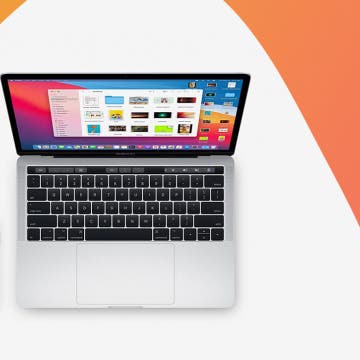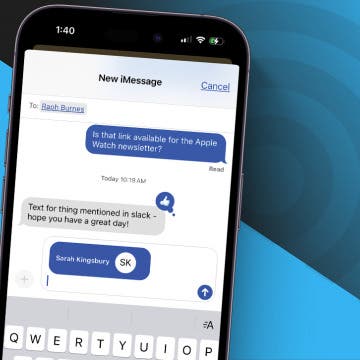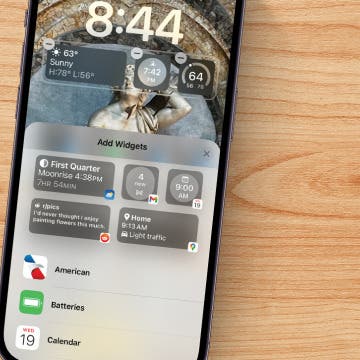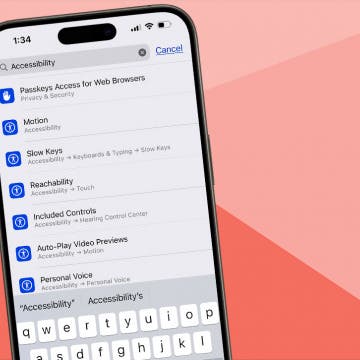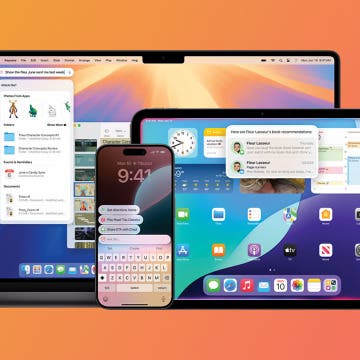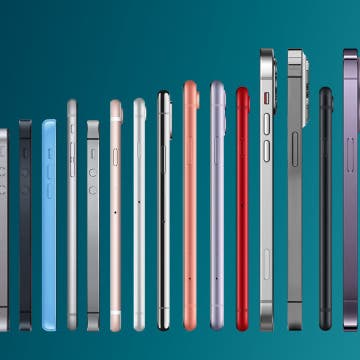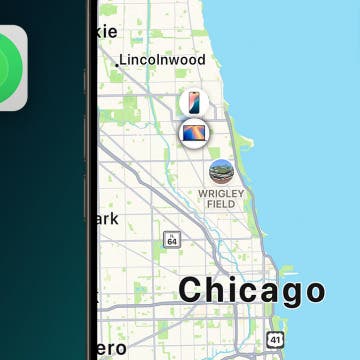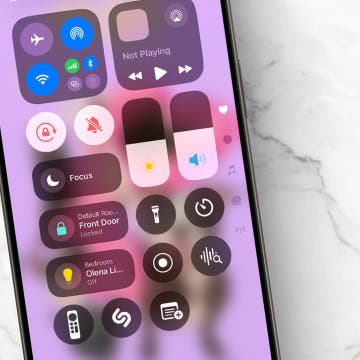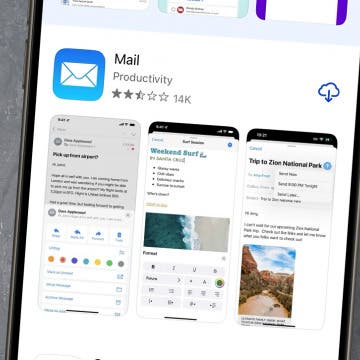With the Push support in the iPhone OS 3, the iPhone has become an excellent platform for instant messaging.
Before the Push support, you could only keep them listening using hacks like Backgrounder on jailbroken devices or using clients that forced the entire phone remain “alive”. Neither is an optimal solution. Now, the Push support provides the platform with something that, in some respects, is even better than the current instant messaging support on competing smartphone operating systems (at least Symbian S60, Blackberry and Windows Mobile). The Push approach is much cleaner than the approach taken on these three operating systems, particularly on Blackberry, where, with IM+, I used to have frequent problems when using direct TCP/IP connections (while the slower HTTP connections did work), and, on Windows Mobile, the occasional unreliability and definitely lower battery life certainly annoyed me.
Let’s start with the best titles. Note that I’ve tested the (currently) latest version of all titles. By the time you read this, some of the apps might have been updated. I keep the article updated the following way: I post separate UPDATE posts all the time but don’t modify the original article. I, however, always update the focal point of this roundup, the comparison & feature chart. Therefore, if you do want to know the latest development, make sure you also search for and read my updates. Future versions of some apps may make them much-much better and recommended. This also means, currently, my recommendation is “only” based on the current version (which I also list) of these apps.
You might also want to check out my related, Windows Mobile-specific article HERE. (Note the article has several UPDATEs at the beginning. Among other things, they link to new versions of the reviewed apps.) It explains a lot of stuff I won’t delve into in this roundup. That is, I’ll try to keep this roundup as terse as possible (I don’t have much time to waste on explaining stuff I’ve already explained in some of my older articles). Also note that, as the IM apps on the iPhone use a vastly different connection model than on Windows Mobile, it would have been useless to try to measure e.g. the data or the CPU usage when in the background – this is why there’re no such measurements in this article. It, however, contains some iPhone-specific stuff; for example, OS3 Push-compliance (without that, you won’t be able to receive messages any more if you press the Home button), whether it supports sending you mails when you receive something (e.g., the way the latest IM+ version on BlackBerry works) and the time needed to display the received message in Push mode. As I’ve already explained in my Windows Mobile article how the chart needs to be read and as the iPhone version of the chart has almost the same rows, I don’t do it again. Note that there’re three new rows:
- the OS3 Push compliance
- whether there’s mail notification if Push doesn’t work / isn’t supported / you select mailing instead
- the time needed to reload an app and display the newly received message on an iPhone 3G one – note that it should be faster on a 3G S.
In addition, I’ve removed the connection-specific stuff present in the WinMo version of the article. The sole reason for this is that Push is an entirely different animal than the TCP/IP (or HTTP) connection WinMo apps use when running in the background.
Note that, as usual, I provide tons of screenshots. In order not to bloat the article, they all need to be invoked separately; I haven’t included them all inline. I’ve also made them in order to be provide you with some kind of a mini-tutorial. I, however, also plan to publish an all-in-one, gentle introduction to the best features of the reviewed apps in the paper version of iPhone Life. (It, being supervised before going to press by native English speakers, will also fix my broken English ;-) )
Let’s start with the, in my opinion, best title, BeejiveIM, which only in few marginal areas lags behind the competition (e.g., sending your location or easy copying of text) but, otherwise, is what I call the best.
BeejiveIM 3.0
click the link for a screenshot of the AppStore record
I consider this the overall best IM app for the iPhone for mainly the following reasons:
- It supports really sophisticated user management; for example, you can handle a given person’s all IM clients and accounts when talking to her or him
- It supports native (!) file transfer in both (!) directions, which also includes sending voice clips and photos without using any Web server in between. This means it’s way easier for your buddies to directly send you files or receive them from you. The files you’ve been sent can be rendered / played right away. For example, if you’re sent an MP3 file, you can play it right away on your iPhone and so on.
- It’s, currently, the only app to have the capability of saving the log of a discussion. Some other apps also remember past chats but they can in no way export / send these so that you can save them as, say, a standard text file.
Of course, it also has some cons; for example:
- No support for any kind of real (!) Voice over IP (VoIP), unlike some of the alternatives. Nevertheless, the VoIP-capable apps are all free so you don’t lose much – after all, all you lose is having to separately install and log into them.
- No support for Skype chat (and some other, for IM, lesser-used protocols; for example, some social networks)
- It requires two taps to switch to the jus-received post. In some of the alternatives, this is one tap or one shake only, making switching even easier and faster.
- Conference support isn’t as good as that of some of the alternatives (e.g., Agile Messenger)
- Flagging support is also a bit weaker than some of the alternate apps (e.g., Agile Messenger)
- It doesn’t support the Mobile flag of some of the protocols; this means your party won’t see your being on a type speed-constrained mobile phone right at the beginning
- It, unlike IM+, doesn’t support sending your location, which is really fun and, at times, can be highly useful
- (It doesn’t have a built-in Web browser. Note that it’s no longer an issue with OS3 and Push; it used to be in previous OS versions where exiting the IM app to switch to Safari or a third-party Web browser would have resulted your completely signing out your account.)
This application used to be considerably more expensive ($16); the new price ($10) is quite a bit more friendly. Currently, for me, this would be THE commercial (!) app to go for – and, if you do need VoIP in addition, also get the free (but, for IM, pretty much useless) Fring.
Some screenshots:
A list of chats
A drop-down toolbar showing the avatars of other active chats and the number of new messages within each. In addition, there’s some icons for mailing the log of the entire current chat; deleting the current chat; sending a picture or a voice message etc.
Downloading:
- Being notified of an incoming MP3 send request
- Download in progress
- After finishing download, you can tap the displayed right arrow to play or forward the file; then, you’re taken to this dialog, where you can choose between playing or forwarding the file
- Should you want to forward it, you’re presented a selector screen with autocomplete-search capabilities. This can be seen in this screenshot, which shows “Menneisyys” has been found right away after entering “me”. Then, the file will be sent.
You can select these flags
In the system-level Settings, you can set tons of parameters; they’re as follows: 1, 2, 3, 4, 5
Here is the fine-tuning for the Push timeout – as you can see, you can configure the application from exiting (without receiving any Push messages) when you press the Home button to remaining active as long as 24 hours.
The Accounts screen; it’s here that you can add new accounts and set the flags (including logging in/out) each individual, already-created one. The flags are the same as above.
Agile Messenger 1.2
Agile Messenger has always been one of the top IM titles on Windows Mobile. It isn’t much worse on the iPhone either – actually, it’s, in my opinion, the second best of the bunch.
click the link for a screenshot of the AppStore record
Its pros compared to BeejiveIM:
- It only takes one tap to switch to another buddy when a message arrives from him/her, thanks to the tabbed interface.
- It supports real conferencing (more than two parties) via MSN
- Best flag support
- Its tab support is the best available
- It has copy support – you can copy any message you receive to the clipboard. (Note that, in BeejiveIM, you can do this with minimal additional work so this isn’t that big a problem with my favourite IM app)
And its cons:
- The biggest problem is the lack of supporting the logon to the same network with more than one account
- Far more restricted file transfer (no file receiving capabilities at all; file sending only works through the Web)
- I’ve encountered problems while trying to add contacts with both Yahoo and ICQ
- No Facebook / MySpace support
Screenshots:
The main chat interface. Note the buttons “10” and “All” to show everything discussed so far; the tabs at the top, one of them (on the far right) being red showing a new message
It’s this easy to copy individual messages to the clipboard. If, after tapping a message, you select “Select”, you can not only copy the entire message but anything from inside.
Conference call (with three participants; here, “juulia” and “werwr”) in progress over MSN.
E-mail notification of messages while offline: 1 2.
Network-dependent (excellent) flags: 1, 2, 3, 4, 5
IM+ 3.1
IM+ is, in my opinion, is the best (albeit very expensive – I paid some US$ 45 for my license) IM application for the Blackberry. On the iPhone, in my opinion, it clearly lags behind the two best titles and only has one area where it’s clearly better and more thought-out.
click the link for a screenshot of the AppStore record
Pros:
- Excellent location support based on system-level location approximation (that is, it doesn’t necessarily require GPS but can also localize you based on [of course, less strict] cellular / Wi-Fi location info)
- Compared to Agile, it supports logging into the same IM network with more than one account
- It has a built-in Web browser (not that important with OS3’s Push any more, though)
- Support for Skype, Twitter (unsupported by the two other IM apps) and Facebook (not supported by Agile)
Cons:
- Unlike with the two (in my opinion) best apps, it doesn’t have any shortcut for one-tap / one-shake switch to the last message received
- Compared to Agile, no full MSN conference support
- Unlike with Agile, no Mobile flag and only six types of flags
- Unlike with BeejiveIM, limited user handling / grouping capabilities
- Unlike with BeejiveIM and just like Agile, no file transfer or chat log export (sending)
Screenshots: Location sending: 1 2
Supported networks
Built-in browser: Portrait Landscape
Fring 1.1.0.7 and Nimbuzz! 1.2.0
click the link for a screenshot of the AppStore record of Fring
click the link for a screenshot of the AppStore record of Nimbuzz!
So far, none of the introduced IM apps have been able to chat via real VoIP. (Sending and receiving voice messages is much-much more awkward and slower than making a full-duplex, realtime call.) Fring, along with Nimbuzz (see the next app) helps in this – and also has some basic text IM capabilities.
Of the two, I think fring is definitely better if you look for a Google Talk client. Nimbuzz tended to deliver worse audio quality. Fring is also compatible with Skype (unlike Nimbuzz), which can be good news for people with jailbroken iPhones (it’s not possible to conduct phone calls with the official Skype client on jailbroken phones).
While they are supposed to support it, neither of these two apps seemed to work with MSN clients.
As far as textual IM capabilities are concerned, both applications fail quite badly:
- Neither of them support (as of the current versions on 8. July) OS3 Push, making it impossible to run them in background on a non-jailbroken phone
- Neither of them support multiple logins to the same network
- Fring doesn’t even support smileys (not that big an issue IMHO, but some people may need it) and landscape orientation (which IS quite big a problem, on the other hand)
- Neither of them support clickable links and the situation can’t be helped with copying them to the OS3 clipboard either as they don’t have copy support either.
- You can’t quickly disable some of the accounts to avoid logging in with them the next time: doing so will result in your having to set them up again (username / password)
Note that, as with all VoIP apps in the AppStore, they refuse to work over a cellular connection.
Now follows the rest. I, in general, don’t really recommend these – unless you’re absolutely sure you can’t shell out $5 or $10 for one of the best three apps and don’t want to put up with the shortcomings of the free, mostly VoIP-specific Fring and Nimbuzz!.
Palringo 2.0
This has a free (lite) version. I couldn’t find the non-lite one here in Europe in the AppStore so I couldn’t test it – only the lite one.
click the link for a screenshot of the AppStore record
The biggest drawback of the lite version is the lack of Landscape support. Neither versions support OS3 Push; the promised, new version (2.1) of it, which is due to be approved sometime in July, will, according to the developer, support it already.
It has some other, major annoyances too; for example, the lack of being able to log into the same network with more than one account and the ability to quickly en/disable accounts for subsequent logins. All in all, in its current form, I don’t really recommend it.
OneTeam 3.0 with Push
This is another commercial ($7) title. I don’t think the comparatively high price is justified: the three apps reviewed first deliver definitely more functionality (even the cheaper ($5) IM+).
My biggest grieve this app is that the gateway to traditional IM networks (MSN etc.), in my tests, has turned out to be much slower than to the native Jabber / XMPP access it has. Sometimes I had to wait for even a minute (!) for a message notification to arrive in Push mode (that is, with a suspended iPhone), while this happened almost instantaneously with the first three IM apps. This isn’t that big a problem while actually chatting; then, I haven’t noticed visible slowdowns any more.
click the link for a screenshot of the AppStore record
I’ve even encountered some lost messages and desynchronization. The latter means I was still logged in on my desktop into my MSN account after minutes (!) of logging in to the same account by OneTeam. Neither of the apps logged out themselves because the lag in the developer’s gateway was so huge.
Finally, please consult the chart for the rest (MobileLinked IM 1.8, Yahoo Messenger 1.1, eBuddy 3.0.2, SworIM 1.01). I don’t recommend them; this is why I don’t discuss them here. AppStore pages are as follows: MobileLinked IM, Yahoo Messenger, eBuddy, SworIM.
UPDATE (09/Jul/2009 16:43) :
a.) After reading the post HERE, I’ve tested the MSN VoIP capabilities of Nimbuzz and Fring.
1. They surely are totally incompatible with the currently available Windows Live Messenger version 2009 (14.0.8064) (WLM for short).
2. However, Fring is compatible with the (old) desktop version 4.7.3001 of Windows Messenger (WM for short) when the call is originated from the iPhone. Too bad the latter is incompatible with the voice / video call of WLM on desktops and doesn’t support concurrent MSN logins (logging in using the same account on different computers) either.
Note that you can only originate calls from inside Fring and not vice versa. If you do the latter, Fring does ring, but, after you accept the call on the iPhone, it’ll be disconnected and the desktop client reports the iPhone not having the necessary hardware for voice calling.
3. While – as opposed to WLM – the voice connection request of Nimbuzz is displayed by WM, after accepting the call originated by the phone, WM on the desktop states the other party is overloaded and, consequently, no chatting can take place. I’ve run several tests, even after a reset and not loading anything else. That is, Nimbuzz doesn’t seem to be even compatible with version 4.7.3001.
b.) Note that Nimbuzz does support VoIP with Skype – as opposed to what I’ve stated above. It works great.
c.) Some people stated eBuddy (see e.g. THIS), despite its lacking functionality, is still worth checking out if you want the cheapest solution – after all, it supports Push.
d.) The "MSN: concurrent logins?" row in the chart - right under the row elaborating on MSN compliance - states there’s currently no MSN client for the iPhone to support concurrent MSN logins (logging in using the same account on different computers). I haven't tested this for AIM (see THIS); I may add this some time when I have the time.
e.) Some people stated Skype does allow voice calls on jailbroken iPhones. I’ve tested the official, current, 1.1 Skype client. It displayed - when I tried to run it on a jailbroken OS3 iPhone 3G - that it can't conduct calls on modified phones. It's working great on the same iPhone without jailbreak.
f.) This roundup strictly concentrates on IM and not other public chatting protocols like IRC or community protocols like Twitter. I may – in the not-too-near future – dedicate a roundup to them as well. See my group chat-related post HERE.
UPDATE (Jul/10/2009):
1.) Fring: According to user reports HERE, MSN/Windows Live Messenger 8.5 does work via voice (VoIP). With version 2009, however, no one was able to make it work. The Fring folks stated they know of the MSN version 2009 issue. So far, no estimates of fixing it. Some days ago, they have stated a Push-compliant version is in works. Also note that, as far as VoIP in iPod Touch is concerned, only the second generation models are concerned – that is, the ones with the built-in speaker. Third-party headphones (with mike) are NOT supported. See THIS for more info.
2.) Nimbuzz: The Nimbuzz folks also admitted voice calling still doesn’t work. Nimbuzz will soon receive Push. Finally, the Windows Mobile version of Nimbuzz received location sending support (also see the great feature of IM+). Hope this will “trickle down” to the iPhone version as well.
3.) IM+ 3.2 has just been become available for download. It’s only a bugfix update – no new functionality.
4.) Skype on jailbroken phones: After receiving comments on running Skype on jailbroken devices, I’ve given it an even more thorough try. On a newly setup OS3 iPhone 3G, I’ve tested it after every “hacking” step (first, jailbreaking; then, installing VoIPover3G; after that, installing AppSync and, finally, Backgrounder). It worked in all my tests. Tht is, disregard my previous comment on it not working – it may have been caused by my overfilling my 8 GB iPhone 3G with programs (which, at the end, resulted in having to restore it entirely because, after a reset, it wouldn’t boot in any more).
5.) Voice calls over 2G/3G: Finally, I’ve checked whether VoIPover3G indeed works under the current OS 3.0 on the iPhone 3G. (But not on the 3GS! A new MobileSubstrate hack is being developed for it. For the time being, you can’t use Wi-Fi only apps over cellular connections with the 3G S.) It does! (Albeit, strangely, it only started doing so after some resets, installing AppSync & Backgrounder and syncing once.)
To enable voice calls over cellular connections (in which the iPhone VoIP apps severely lack compared to e.g. Symbian S60 or Windows Mobile), you’ll need VoIPover3G. It’s very easy to install: just jailbreak your phone (see the 3.0 and iPhone 2G/3G-specific steps [1…5] HERE, in the UPDATE (06/29/2009 3:23CET) section) and, then, in the Cydia, search for VoIPover3G and install it.
Note that, by default, it allows both fring and Skype calls to be allowed over 3G (or any other cellular connection). Also, it allows for any kind of AppStore download – not only downloads under 10 Mbytes. To do the same for Nimbuzz, enter com.nimbuzz.Nimbuzz in /Library/MobileSubstrate/DynamicLibraries/VoIPover3G.plist as is explained HERE; for netTV LITE, com.chestnutsoft.netTVLITE. To enable bigger downloads than 60 Mbytes over cellular lines in iCab Mobile, enter de.icab.iCabMobileBeta (and make sure you allow unlimited downloads for Wi-Fi in the system-level settings). And the list continues – for example, an image of Slingplayer operating over a cellular connection is HERE. Also note that the old alternative of VoIPover3G, Tricker ThreeG, isn’t supported under OS3 any more.

UPDATE (07/15/2009) :
1.) The new, 1.3.0 version of Nimbuzz has just become available in AppStore.

The notable changes:
- Push support – at last! (Note the remarks below, though.)
- Some file transfer support. This, however, doesn’t seem to mean you can transfer files with your, say, MSN contacts.
- Some degree of location support. This, however, is far more restricted to IM+’s excellent approach and seems to be only available to direct Nimbuzz buddies – not to those of, say, MSN.
Problems:
- The MSN voice call problem still hasn’t been fixed.
- Much as Push does work, dialogs aren’t displayed. The phone doesn’t even vibrate – the latter only works when you’re inside the app. There is only a quick tone. This means
1. you have to find the Nimbuzz icon yourself (you can’t rely on the quick shortcut offered by dialogs)
2. as the phone doesn’t vibrate, you may miss incoming messages much more frequently than with IM apps that do vibrate.
The in-app notification settings dialog doesn’t let you enable Push dialogs either:

(and, again, vibration only works inside the app).
The system-level Push notification setting dialog is the standard one:

2.) Some additions to the Palringo [Lite] 2.0 review (thanks to Haas_Dave):
- It supports multiple accounts on AIM/ICQ/iChat and Yahoo
- has some location support (but not as sophisticated as IM+)
- quickly en/disabling accounts for subsequent logins is supported (tap the account, Availability / offline or online)
- there’s no full version of the app in the American store either
UPDATE (Jul/17/2009):
Version 3.0.1 of OneTeam 3.0 with Push has just been released.
As can be seen in the update list below, while there certainly are some bugfixes, no features have not been added:

That is, it still doesn’t support for example landscape mode chatting, log mailing, VoIP or copying; which means this app still remains in the “non-recommended” group.
UPDATE (20/07/2009):
1. Fring has received OS3 Push support.

It worked OK in my tests. Unlike Nimbuzz (see the 07/15/2009 update) and like all the other, Push-enabled apps, it displays a dialog showing who sent the message and also providing a way to quickly invoke Fring. Note that MSN voice calls to Windows Live 2009 still don’t work and landscape chatting isn't supported either.
Note that they also seem to have fixed the "Go to" icon issue - fring no longer crashes when you tap it. Great!
With this, fring has become a decent alternative - if you can live with its shortcomings.
2. There’s a new version of eBuddy with some improvements and bugfixes (nothing really groundbreaking):

UPDATE (07/21/2009): Yahoo Messenger with support for Push out!

UPDATE (08/17/2009):
Palringo Lite, with the brand new, 2.1 version, has received, among other things, Push support:

In addition, the Premium version has been released for $5, with the following features:



I’ll try to post the updated chart covering the changes soon.







